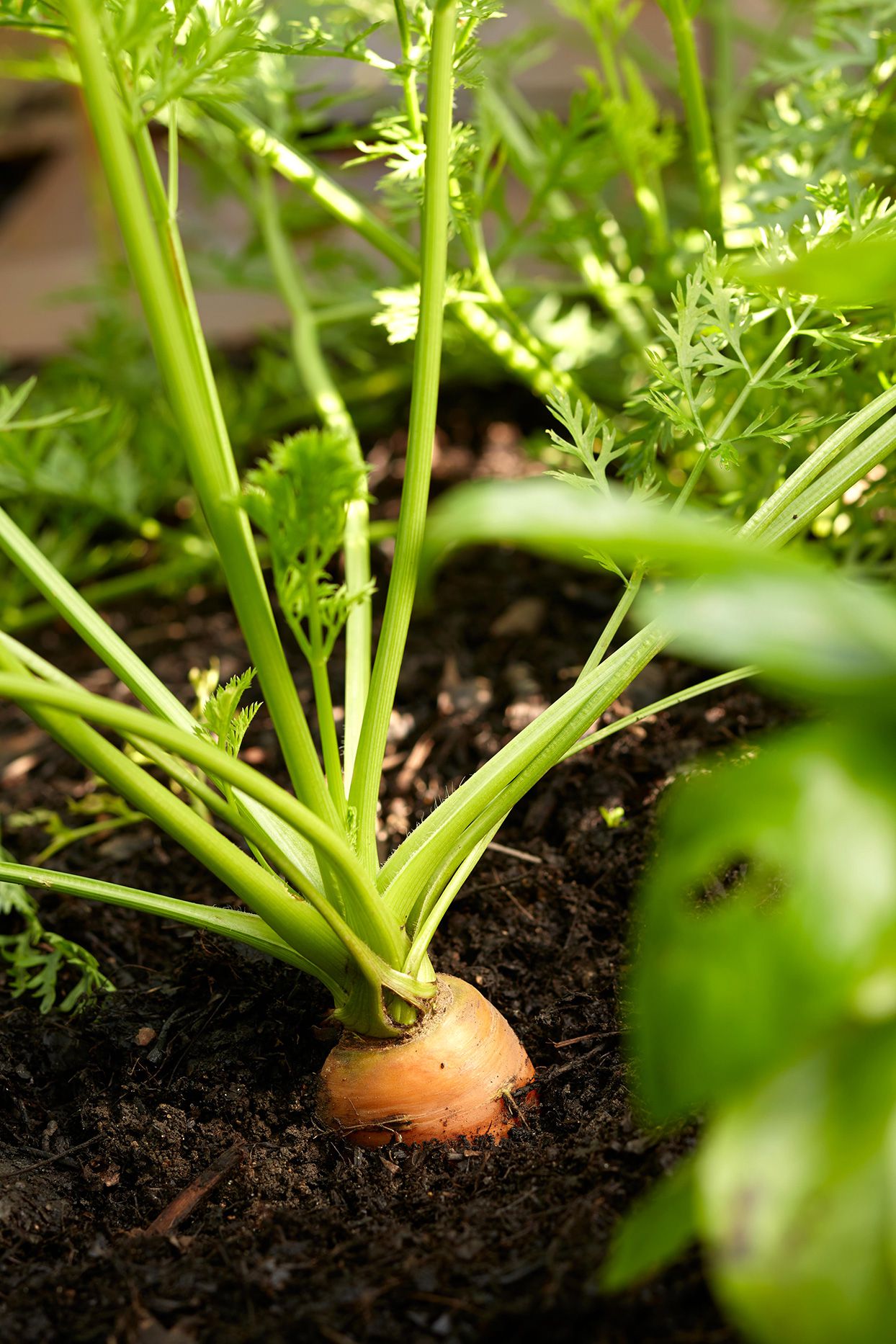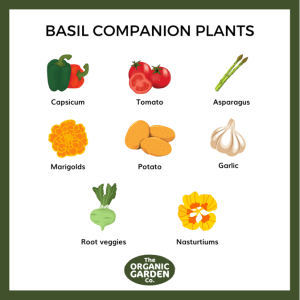To create organic soil for your healthiest garden, mix compost, organic matter, and natural fertilizers. Ensure proper aeration and moisture levels.
Creating organic soil is essential for a thriving garden. Rich, organic soil promotes healthy plant growth and improves soil structure.
Start by collecting compost from kitchen scraps, leaves, and grass clippings. Add organic matter like peat moss or aged manure to enhance nutrient content.
Use natural fertilizers such as bone meal, fish emulsion, or seaweed extract. Aerate the soil regularly to maintain proper oxygen levels.
Ensure the soil retains moisture by incorporating mulch or straw. With these steps, you can cultivate a garden that yields bountiful, healthy produce.
Benefits Of Organic Soil
Creating organic soil can transform your garden into a thriving oasis. Organic soil offers numerous advantages for both plants and the environment. This section explores the key benefits of organic soil for your garden.
Boosts Plant Health
Organic soil enriches the garden with essential nutrients. These nutrients are vital for plant growth and development. It also improves soil structure, enhancing root penetration and water retention.
Healthy soil promotes disease resistance in plants. With organic soil, plants can better withstand pests and diseases. This leads to a more robust and vibrant garden.
Environmental Advantages
Organic soil supports sustainable gardening practices. It reduces the need for chemical fertilizers and pesticides. This helps maintain a balanced ecosystem in your garden.
Using organic soil lowers your carbon footprint. It promotes the recycling of natural materials, reducing waste. Organic soil also enhances biodiversity, supporting various beneficial organisms.
Here is a quick overview of the environmental benefits:
| Benefit | Description |
|---|---|
| Reduced Chemicals | Less dependence on synthetic fertilizers and pesticides |
| Lower Carbon Footprint | Promotes recycling and reduces waste |
| Enhanced Biodiversity | Supports beneficial organisms in the soil |
Organic soil is a win-win for your garden and the planet. Start using organic methods to see these benefits in action.
Essential Soil Components
Creating organic soil is crucial for a healthy garden. The soil must have the right components to support plant growth. Below, we discuss the essential soil components that make organic soil beneficial.
Organic Matter
Organic matter is vital for soil health. It includes decomposed plants and animal residues. This matter improves soil structure and water retention. It also provides nutrients to plants.
Adding compost is a great way to increase organic matter. You can make compost from kitchen scraps like vegetable peels and coffee grounds. Fallen leaves and grass clippings also work well.
Minerals And Nutrients
Minerals and nutrients are essential for plant growth. Healthy soil has a balance of nitrogen, phosphorus, and potassium. These elements help plants grow strong and healthy.
| Nutrient | Function |
|---|---|
| Nitrogen | Promotes leaf growth |
| Phosphorus | Helps root development |
| Potassium | Aids in flower and fruit production |
To ensure your soil has these minerals, you can use natural fertilizers. Bone meal, fish emulsion, and wood ash are good options. Testing your soil can also help you know what it needs.
Choosing The Right Compost
Creating organic soil is essential for a healthy garden. One of the key steps is choosing the right compost. Compost provides vital nutrients and helps plants thrive. Not all compost is the same, so let’s explore the best options.
Types Of Compost
There are various types of compost to consider:
- Green Compost: Made from grass clippings and kitchen scraps.
- Brown Compost: Includes leaves, straw, and paper.
- Manure: Animal waste, rich in nutrients.
- Mushroom Compost: Byproduct of mushroom farming, great for soil.
Each type offers unique benefits. Green compost adds nitrogen. Brown compost provides carbon. Manure is nutrient-rich. Mushroom compost improves soil structure.
How To Make Compost
Making your own compost is simple and rewarding. Follow these steps to create nutrient-rich compost:
- Choose a Location: Pick a spot in your garden for the compost bin.
- Gather Materials: Collect green and brown materials. Use kitchen scraps, leaves, and paper.
- Layer the Materials: Alternate green and brown layers. Aim for equal parts.
- Moisten the Pile: Keep the compost pile moist, not soggy.
- Turn the Pile: Stir the compost every few weeks. This helps it break down.
Compost should be ready in a few months. Use it to enrich your garden soil.
| Material | Type |
|---|---|
| Grass Clippings | Green |
| Leaves | Brown |
| Kitchen Scraps | Green |
| Straw | Brown |
Start composting today and watch your garden thrive!

Credit: www.vermontpublic.org
Incorporating Green Manure
Incorporating green manure into your garden soil is a fantastic way to boost soil health. Green manure involves growing specific plants and then turning them into the soil. This enriches the soil with nutrients and organic matter. It also improves soil structure and fertility, leading to a healthier garden.
Benefits Of Green Manure
Green manure offers numerous benefits for your garden:
- Improves soil fertility: Adds essential nutrients to the soil.
- Enhances soil structure: Makes soil loose and friable.
- Increases organic matter: Helps retain moisture and nutrients.
- Reduces soil erosion: Protects soil from wind and water erosion.
- Suppresses weeds: Reduces weed growth naturally.
Best Plants For Green Manure
Choose the best plants to use as green manure for maximum benefits:
| Plant | Benefits |
|---|---|
| Legumes | Fix nitrogen in the soil, enriching it. |
| Clovers | Improve soil structure and add organic matter. |
| Mustard | Suppresses weeds and pests. |
| Rye | Protects soil from erosion and adds biomass. |
| Oats | Improves soil texture and suppresses weeds. |
Planting green manure is easy and rewarding. Start by choosing the right plants for your soil and climate. Then, sow the seeds and let them grow.
Once they mature, cut them down and turn them into the soil. This simple process will transform your garden soil, making it rich and fertile for your healthiest garden yet.
Using Natural Fertilizers
Creating organic soil for your garden ensures healthy plant growth. One key method is using natural fertilizers. They enrich the soil without harmful chemicals. Let’s explore the types of natural fertilizers you can use.
Animal-based Fertilizers
Animal-based fertilizers are rich in nutrients. They provide essential elements for plant growth.
- Manure: Manure from cows, chickens, or horses enriches the soil. It adds nitrogen, phosphorus, and potassium.
- Bone Meal: Bone meal is made from ground animal bones. It is high in phosphorus and calcium.
- Fish Emulsion: Fish emulsion is a liquid fertilizer. It is high in nitrogen. It helps plants grow quickly.
Plant-based Fertilizers
Plant-based fertilizers are also effective. They are sustainable and eco-friendly.
- Compost: Compost is made from decomposed organic matter. It improves soil structure and fertility.
- Alfalfa Meal: Alfalfa meal is a natural soil conditioner. It provides nitrogen and other trace elements.
- Seaweed: Seaweed is rich in trace minerals. It boosts plant health and disease resistance.
| Fertilizer Type | Main Nutrient | Benefits |
|---|---|---|
| Manure | Nitrogen | Improves soil structure |
| Bone Meal | Phosphorus | Promotes root growth |
| Fish Emulsion | Nitrogen | Quick plant growth |
| Compost | Various nutrients | Enhances soil fertility |
| Alfalfa Meal | Nitrogen | Soil conditioner |
| Seaweed | Trace minerals | Boosts plant health |
:strip_icc()/organic-garden-soil-planting-c110b36c1-d084816c37a14af7a9f2ddffa7ec00d8.jpg)
Credit: www.bhg.com
Maintaining Soil Health
Creating organic soil is essential for a thriving garden. Healthy soil leads to healthy plants. Maintaining soil health requires regular attention and care.
Regular Soil Testing
Regular soil testing helps you understand your soil’s current state. You can use simple soil test kits available in garden stores. These kits test for nutrients, pH levels, and soil composition.
To test your soil, follow these steps:
- Collect soil samples from different garden areas.
- Mix the samples in a clean container.
- Follow the kit instructions for testing.
Based on the test results, you can adjust your soil care practices.
Balancing Soil Ph
Soil pH affects plant growth. Most plants prefer a pH of 6.0 to 7.0. Balancing soil pH ensures your plants get the nutrients they need.
To balance soil pH, follow these steps:
- If the soil is too acidic (low pH), add lime.
- If the soil is too alkaline (high pH), add sulfur.
- Re-test the soil after a few weeks.
Use the following table for pH adjustment guidelines:
| pH Level | Adjustment Needed | Material to Add |
|---|---|---|
| Below 6.0 | Increase pH | Lime |
| Above 7.0 | Decrease pH | Sulfur |
Regularly check and balance your soil pH for optimal plant health.
Effective Mulching Techniques
Creating organic soil is essential for a healthy garden. One effective way to improve soil health is through mulching. Mulching helps retain moisture, suppress weeds, and enrich the soil. Let’s explore some effective mulching techniques for your garden.
Types Of Mulch
There are various types of mulch you can use in your garden. Each type has its benefits and uses. Here are some common types:
- Organic Mulch: Includes straw, grass clippings, and compost.
- Inorganic Mulch: Includes stones, plastic, and landscape fabric.
- Bark Mulch: Made from tree bark, great for flower beds.
- Leaf Mulch: Made from shredded leaves, excellent for vegetable gardens.
How To Apply Mulch
Proper application of mulch is crucial for its effectiveness. Follow these steps to apply mulch correctly:
- Clear the area of weeds and debris.
- Water the soil before applying mulch.
- Spread the mulch evenly around plants.
- Keep mulch about 2-3 inches deep.
- Leave a small gap around plant stems to prevent rot.
Here is a table showing the ideal depth for different types of mulch:
| Type of Mulch | Ideal Depth |
|---|---|
| Organic Mulch | 2-3 inches |
| Inorganic Mulch | 1-2 inches |
| Bark Mulch | 2-4 inches |
| Leaf Mulch | 1-2 inches |
Mulching can transform your garden’s health. Choose the right type and apply it properly to see the best results.

Credit: www.richardsonsaw.com
Avoiding Chemical Additives
Creating organic soil is crucial for a healthy garden. Avoiding chemical additives ensures your plants grow naturally. Chemicals can harm soil and plants. Let’s explore common harmful chemicals and natural alternatives.
Common Harmful Chemicals
Many chemical additives are harmful. These include:
- Glyphosate: Found in many weed killers, it can damage plant health.
- Neonicotinoids: These insecticides harm beneficial insects like bees.
- Phosphates: Overuse can lead to nutrient imbalances in soil.
- Synthetic Fertilizers: Often contain harmful salts and heavy metals.
Natural Alternatives
Using natural alternatives promotes healthier soil. Consider these options:
| Purpose | Natural Alternative |
|---|---|
| Fertilizer | Compost, Manure, Fish Emulsion |
| Insect Control | Neem Oil, Diatomaceous Earth, Companion Planting |
| Weed Control | Mulch, Vinegar, Hand Weeding |
Natural alternatives help maintain soil health. They also protect beneficial organisms.
Follow these tips to avoid chemicals:
- Read Labels: Ensure products are organic.
- Make Compost: Use kitchen scraps and yard waste.
- Rotate Crops: Prevent soil depletion and pest buildup.
By avoiding chemical additives, you create a thriving garden. Your plants will thank you!
Frequently Asked Questions
How Can I Improve My Garden Soil Organically?
Add compost and mulch regularly. Use cover crops like clover. Rotate plants yearly. Avoid chemical fertilizers. Use organic matter.
How To Create Your Own Organic Soil?
To create organic soil, mix compost, peat moss, and perlite. Add kitchen scraps, yard waste, and manure. Ensure proper aeration by turning the mixture regularly. Maintain moisture for microbial activity. This results in nutrient-rich, organic soil perfect for gardening.
What Is The Best Organic Matter To Add To Your Garden?
Compost is the best organic matter for your garden. It improves soil structure, retains moisture, and provides essential nutrients.
How Do You Prepare Soil For An Organic Vegetable Garden?
Start by testing soil pH. Add organic compost to enrich nutrients. Remove weeds and rocks. Loosen soil with a garden fork. Ensure proper drainage.
Conclusion
Crafting organic soil ensures your garden thrives. Follow these steps for a vibrant, healthy garden. Your plants will thank you. Embrace natural methods and see the difference. Organic soil boosts plant growth and resilience. Start today and watch your garden flourish.
Happy gardening!





